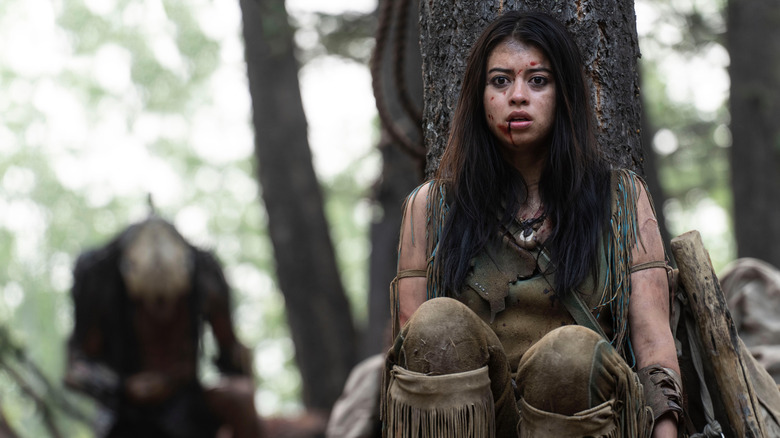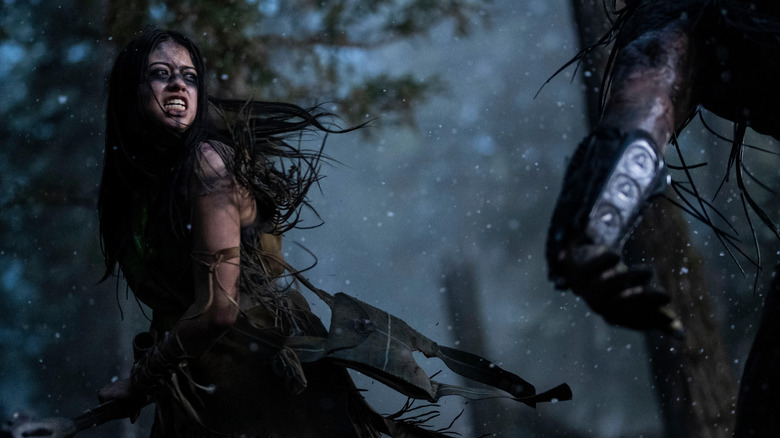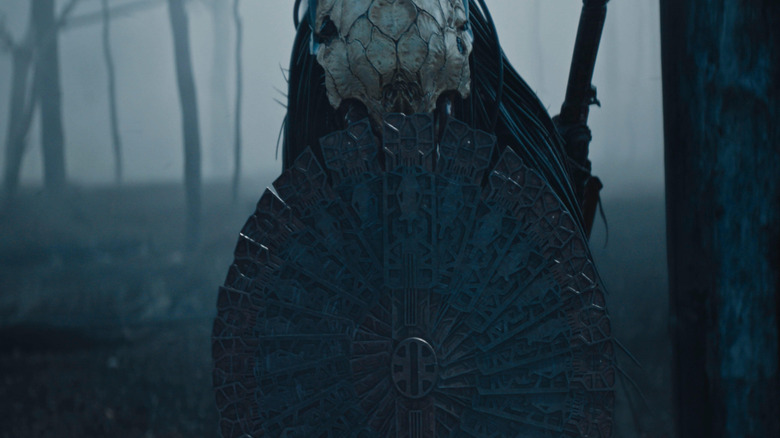Prey Review: The Predator Series Heads Back In Time, Blending A Revisionist Western With A Bloody Monster Movie
The "Predator" series is a strange beast. John McTiernan's 1987 pic was a testosterone-filled gore-fest, starting off as an action-packed Arnold Schwarzenegger extravaganza before it suddenly turned into a scary monster movie. Ever since then, the franchise has been chasing the high of that first movie with so-so results. The 1990 sequel "Predator 2" brought the Predator out of the jungle and into the big city. "Predators" left Earth for an alien planet, and Shane Black's "The Predator" tried to go back to basics with a rather messy movie that showed signs of studio interference. And oh yeah, there were two "Alien vs. Predator" movies, but let's go ahead and ignore them completely.
While I wouldn't call most of these movies terrible (and in fact, "Predator 2" is a little underrated), none of them ever quite recreated what made McTiernan's original such a now-iconic action-horror-sci-fi movie. But Dan Trachtenberg's "Prey," the latest title to join the fray, comes perhaps the closest to recapturing the energy of the original — and it does so by shaking things up. At the same time, Trachtenberg's movie also feels mighty similar to the first movie — it's a surprisingly successful blend of old and new.
For a large amount of the runtime, Trachtenberg's movie, with a script by Patrick Aison, doesn't even feel like a "Predator" movie. It plays more like a revisionist Western, focusing on members of the Comanche Nation in the 1700s. Naru (Amber Midthunder) dreams of being a real warrior within her tribe, but it's her brother Taabe (Dakota Beavers) who gets all the fame and glory, even though it becomes clear Naru is the more knowledgable and skilled sibling (she can do pretty much anything battle-and-hunting-related, including turning her ax into something akin to the rope blade Scorpion fires out of his hand in "Mortal Kombat"). But none of that works in Naru's favor, and the other men in the tribe openly mock and doubt her. The only support she has is her very, very good dog, who accompanies her everywhere (and seriously, major props to this dog actor, who seems like a very good boy).
Naru wants nothing more than to finally prove herself to her people, and she might get the chance when she spots what appears to be a ball of fire slowly falling to the ground from the sky above.
A rustic Predator
"Prey" unfolds at a slow, reflective pace. There are bursts of action when Naru is hunting, but there are also long stretches of silence. Here, Trachtenberg and cinematographer Jeff Cutter make gorgeous use of on-location filming. The camera is often held low, allowing wide open skies and sprawling plains to stretch on, and on, and on. Naru rises in the morning to find beautiful sunrises casting everything in an eerie shadow. She scales mountains and moves about tall grass, silent but focused. The scenery genuinely feels like a time and place long gone, and the long shots of nature and reflective mood will no doubt have some thinking of Terrence Malick (I am not saying "Prey" is anything like a Malick movie, by the way. But I know that connection is going to be made). The wide shots of untouched landscapes are consistently stunning, and it's a shame this movie has been relegated to the world of streaming instead of being projected across the biggest, widest screen possible.
And then, all at once, an alien monster shows up. This may seem jarring, but it's actually the exact same formula as the first movie: what starts off seeming like one story suddenly, and violently, changes into something else. Because there's a Predator lurking about, and since we're back in the past, this Predator isn't as high-tech as his future counterparts. The alien creature clearly has more advanced weaponry than the Comanche, but it's not quite there yet. Instead of wearing a polished metal mask, this Predator's mask is fashioned from the skull of some unknown creature. And while the now-familiar Predator laser-sighting is still here, the Predator doesn't fire laser blasts from his gun — he shoots deadly projectile darts. Some of this may come across as silly, but this is an inherently silly series, and I found the rustic Predator weapons rather charming, in a gruesome sort of way.
If it bleeds, we can kill it.
Midthunder is at the center of nearly every scene in "Prey," and she carries the film with aplomb. There's not a single moment where we don't doubt her ass-kicking skills; there aren't an abundance of quick cuts to hide a stunt performer over and over again — it really looks like Midthunder is engaging in the action that begins to unfold. Once it becomes clear a Predator is nearby, "Prey" ramps up that action. At first, the alien creature finds itself targeting the deadly animals that lurk by. This happens so frequently that I began to worry the movie would only show the Predator targeting beasts. Thankfully, more and more human characters — especially a group of nasty, cruel French trappers — arrive, making themselves perfect cannon fodder for the hunter from beyond the stars.
It's a clash between the idyllic nature of the landscape and the unrelenting killing power of the Predator. The film doesn't quite add a message about the Comanche (and other indigenous peoples) being run off their land by outside invaders, but the implications are clear: what was once a place of peace has become a warzone, and no one is safe. The moments when we see the Predator unleashed on this land will no doubt thrill those hungry for bloody action, but it comes with a caveat: the majority of the blood is rendered via CGI, and you can always tell. Indeed, the movie's reliance on CGI grows frustrating — almost all the animals are CGI, and even the Predator himself, when he pulls off his mask, is given an unfortunately digital face. It's a far cry from the brilliant, disturbing practical effects work used to create the Predator from the original film.
The shoddy CGI is not enough to completely tank "Prey," but it hampers what was turning out to be an otherwise rousing success, and perhaps the best "Predator" movie since the original. Still, Trachtenberg and company have put together a crackerjack monster pic, full of clever new approaches to old material. Those looking for the familiar will recognize plenty of callbacks to other "Predator" films ("If it bleeds, we can kill it," a character here says at one point), while anyone searching for new thrills will get a kick out of the film's genre mash-ups. Although sooner or later, you'd think these Predators would get tired of coming to Earth and getting their asses kicked.
/Film Rating: 7 out of 10


